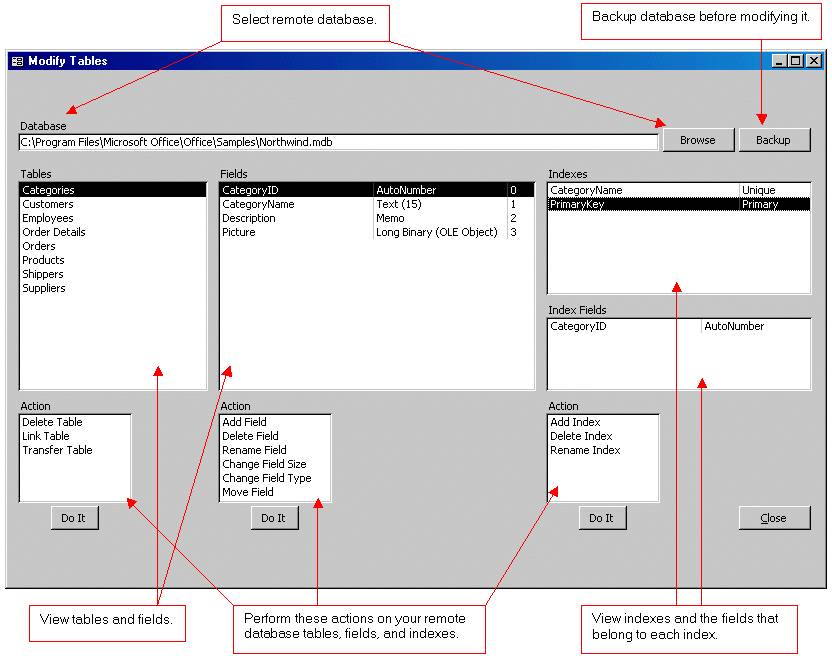In this article, I will share all the key strategies that have helped me grow to over 42,000 followers and how you can apply them to your LinkedIn.
Anyone trying to grow a personal brand online eventually has to choose which social media platforms to focus on and why. For me, it was LinkedIn and X (formerly Twitter).
Since then, I’ve been posting, engaging, commenting, sharing, messaging, and interacting on a near-daily basis — slowly but steadily attracting my tribe of B2B marketers.
With 45,000 LinkedIn followers when writing this, I’ve learned that LinkedIn tends to reward creators with virality when “stories from the trenches” are told from first-hand experience in the field.
X has been a tougher nut to crack. Over the years, I’ve tried to replicate the same success on LinkedIn, but have barely moved the needle. Sometimes, I even repurpose my best-performing LinkedIn posts on X — and they flopped.
I never really cracked the code on X — until this year.
You are the head of marketing — the CEO asks: "what's our website conversion rate?"
Pause. Breathe. And NEVER provide a blended conversion rate for the entire website.
A thread on how to answer…
— Gaetano 🇺🇦 (@gaetano_nyc) April 12, 2023
This was my most “viral” post of all time (on X).
I was stunned at the reaction, and it caused me to reflect on how and why some posts get way more engagement than others. In this article, I'll unpack all my findings.
But first, a caveat: Going viral on X gave me a quick burst of new followers and some temporary praise, but soon after, everything normalized. After enjoying that small moment of glory, I went right back to work and kept grinding.
It’s important to acknowledge that just one (out of hundreds of posts) will become a hit, and virality is mostly out of your control. It takes years of consistency and practice to master the art of copywriting on X.
So follow the advice in this guide, and you’ll increase your odds of hitting it big.
The anatomy of a viral tweet
So, why did my post on X blow up? I believe it had the right ingredients: Unique knowledge explained in an interesting format with a contrarian twist.
On top of that, it had:
- A personal experience that’s commonly problematic but rarely discussed.
- A “back-and-forth” scenario exchange in a conversational format.
- An extremely compelling hook — every B2B marketer wants to learn how to answer difficult questions from the company CEO.
- No sensationalism or clickbait. The answer was straightforward yet unexpected and refreshing. People love learning about new ways of solving old problems.
Understanding X’s algorithm
Just like understanding how SEO can help you increase visibility on Google Search, there’s a method for posting on X that maximizes engagement.
Tanay Jaipuria, an architect of social media algorithms, broke down X’s algorithm after it open-sourced how it works in spring 2023. Here are some key takeaways.
How X curates content feeds
X’s algorithm initially fetches around 1,500 posts for a user in a session, drawing from two sources: in-network (posts from people you follow) and out-of-network (posts from those you don’t follow, also known as a ‘For You’ feed). The in-network source contributes about half of these tweets.
For out-of-network sources, X uses your social graph (tweets popular among people with similar interests) and topic embeddings (based on your preferred topics, with X categorizing posts into 145,000 communities). If you want a good sense of who your target audience is, scroll your ‘For You’ feed.
How X ranks content on your feed
X’s algorithm predicts the likelihood of a user engaging (liking, commenting, retweeting). It assigns weights to these actions and calculates an overall score for each post for a specific user.
This scoring considers user-level preferences, post-level factors, and the user’s relationship with the author.
For example, replies hold a significant weight versus simply liking or retweeting. Tanay broke down each tweet-level factor in the table below:
After scoring, the algorithm filters the posts (removing blocked or muted content, ensuring author diversity and content balance) and then mixes in promoted posts and other non-organic content.
How to maximize your chances of going viral on X
Here are some tactics I learned from my viral moment on X, plus others I’ve seen creators and brands use to great effect.
Write engaging threads
Threads are the perfect medium for storytelling, sharing insights, and engaging with audiences in a more in-depth manner than a single post. But there’s an art to writing threads, and failing to nudge readers toward each consecutive piece of content can kill the momentum of your thread. Here are some of my best tips:
Start with a hook
Your first tweet is your headline. It should be compelling enough for readers to click and read more. Use a strong statement, a clear question, an eye-popping statistic, or a teaser that hints at an unfolding story.
Even a simple list post format can do the trick, especially if a little FOMO is baked into the equation.
If you’re struggling with writing hooks that grab attention, check out this expert resource from Masterclass.
Make the structure easy to follow
Consider these three core practices when writing your threads:
- Spacing: Break up your text to make it more readable. Avoid large blocks of text.
- Numbering: Number your tweets to help readers follow along, especially if they encounter the thread mid-way.
- Emojis and graphics: Use emojis, graphics, or GIFs to add personality and visual breaks in the text.
Mix up the type of content
Threads don’t always have to be long and detailed. They can be concise and still provide value. Try sharing different types of content, like personal stories, factual information, in-depth analysis, or even humor.
Also, don’t be afraid to try new formats or structures. You can include bullet points, ask questions, or use multimedia to enhance your message. Chris Tweten of SpacebarSEO is a pro when it comes to mixing up content types in his threads. Just check out this example below:
Ensure that each post in the thread contributes to your overall message or story. Provide insights, solutions, or engaging narratives that keep the reader interested. Each piece of content needs its own hook to keep people scrolling.
Showcase your personality
Adding a unique personal touch is a chef’s kiss for growing your X account and improving content performance. If you look at platforms like TikTok, where most content is rich with personality, there’s something to be learned about that success formula.
When sharing your personal stories, be authentic. Your goal should not be engagement; it should be relatability.
Below is an example of how Amanda Natividad, VP of Marketing at SparkToro, relates to her audience as both a new mother and a new parent.
I recently had a baby. Here were some of the most useful, thoughtful gifts friends have given us:
1) Charcuterie board: Pregnant ppl are advised to stay away from cured meats and soft cheeses so chances are, mom is craving this. Ideally, you’d order locally (LA friends, check…
— Amanda Natividad (@amandanat) September 7, 2023
If you know Amanda, you know she’s the person who coined the term zero-click content. While most of her audience follows her for marketing takes, she’s still relatable by adding her personal experiences that others can resonate with.
Here’s another good thread from Chris Orlob, where he shares real-world insights from weekly conversations with Chief Revenue Officers.
Consider that many salespeople sell to executives, making this very valuable information. Sometimes, you don’t need to be fancy. Simply dropping rare knowledge bombs can get the job done.
I talk to 3-5 Chief Revenue Officers every week.
Guess what we talk about?
What separates the best salespeople from others.
Here’s 4 patterns I've heard this week alone:
— Chris Orlob (@Chris_Orlob) November 17, 2023
Be visually appealing
Share compelling visuals like graphs with unique data or GIFs for a significant ranking boost.
Multiple images can amplify this effect. Here’s an example of a viral thread with several images helping tell this author’s full story:
We're in the biggest Housing Bubble ever in 2023.
Home prices, adjusted for inflation, are 85% overvalued compared to their 130-year average.
The only other time the overvaluation came close was in 2006.
And we all know what happened next. 📉 pic.twitter.com/RCOgcL69k0
— Nick Gerli (@nickgerli1) September 20, 2023
There are plenty of great ways to use visuals in your tweets. Here are some examples:
Comparison images
Check out how Eddie Shleyner uses text overlays and color to complement his graphic about copywriting exercises — the comparison effect of looking at “before vs. after” is captivating and drives home the point.
One of the best exercises you can do as a copywriter is synthesize longer writing into shorter writing.
Because — and this is almost always true — if you can rewrite something to say the same thing in fewer words, you’ve made the work better.
And a great place to practice is… pic.twitter.com/oiUA4MHwF6
— Eddie Shleyner 🇺🇦 (@VeryGoodCopy) May 10, 2023
Memes
Even the most stoic person will find the occasional meme hilarious. If you’re short on content ideas, give memes a try. This SEO meme from Nick Jordan was great!
SEOs when their technical audit finds two <H1> tags on the Contact Page pic.twitter.com/1YLIsmYJTp
— Nick Jordan (@nickfromseattle) October 2, 2023
Of course, not every brand needs to use memes. But even in traditionally “boring” industries, there’s room for humor in your social media strategy.
Memes as a social media marketing strategy is something Tommy Clark, founder of Clark Media, swears by — and he has some intriguing numbers that back this up.
Get his complete framework from this thread.
Twitter growth for startups comes down to a (mostly) repeatable playbook.
Here are the 5 simple steps I'd follow if I wanted to grow a brand on Twitter from scratch in 2023:
— Tommy Clark (@tclarkmedia) December 29, 2022
Infographics
Telling stories using data is a great way to garner engagement, but plastering numbers all over a tweet can bore your followers and readers. Instead, tell that story using an infographic — one you've created or sourced from the web. Check out how Patrick Stox from Ahrefs shares the most common technical SEO issues in one compelling visual.
What do technical SEO issues look like across 1,002,165 websites? We ran the largest site audit study ever to find out!
I included personal commentary for the top issues.
Check it out: pic.twitter.com/Jvdr3Wm2AA
— Patrick Stox (@patrickstox) August 31, 2023
Infographics are also great for explaining in-depth processes when a single post can’t do it justice. Alex Garcia breaks down the process of creating attention-grabbing hooks in video marketing in a straightforward way. You can do this within minutes using the Notes app on your iPhone.
One hook in your short form content isn’t enough.
Most videos are structured like this:
Hook – Body – Close
But the problem is the algorithm rewards high watch times.
So, here’s a better way to structure your videos:
Hook – Payoff – Hook – Payoff
Think of each hook as a… pic.twitter.com/M8SaD1Mr9w
— Alex Garcia 🔍 (@alexgarcia_atx) November 3, 2023
Pack text-only posts with value
The fact that images tend to resonate doesn’t mean text-only posts don’t have their place.
Sometimes, a text-only post sharing a rare lesson, contrarian perspective, or hard-to-find knowledge is all it takes to go viral. In fact, that is the exact formula for my viral post on X, which led to me writing this guide.
Below is another example from Alex Greifeld, an expert brand advisor in the eCommerce space, sharing her top 10 brand positioning frameworks in an easy-to-understand format.
10 brand positioning frameworks:
1. White space: we're meeting a need that no one else is meeting
2. Oppositional: category conventions demand that brands do X, but we think that is wrong
3. Reframing: category leaders compete on attribute A, but we're focusing on attribute Z
4.…— Alex (@heyitsalexP) August 14, 2023
While many of Alex’s top posts are text-based, they perform super well because her audience knows her tweets will be valuable. If you go the text-based route, get straight to the value and make your posts easy to digest, understand, and shareable.
Stick to your niche
Align your language with your audience’s core interests to sidestep a substantial visibility reduction. For example, if your audience looks to you for B2B marketing advice, avoid excessively sharing your opinions of today's socio-economic landscape.
X seems to be slightly more forgiving about this than LinkedIn, so it's fine to showcase some personality and occasionally write about other topics — but don't make these tangents the bulk of your content.
Instead, share content that resonates deeply with your audience’s interests to catch fire in the feeds. Rand Fishkin calls these “engagement streaks,” where several posts in a row get massive visibility.
For example, folks know my presence in the SEO and B2B marketing space, so I curate most of my topics to appeal to this audience. If I suddenly start writing obsessively about pizza, I’ll get demoted.
Use hashtags strategically
As noted in Tanay’s X algorithm breakdown from earlier, hashtags do still have relevance on the platform, but not the viral effect they used to. If you’re still looking to use hashtags, consider some of the tips below:
- Discoverability: Hashtags can make your content more discoverable to users interested in specific topics. Using relevant hashtags in your tweets can propagate them in search results or dedicated feeds for those hashtags, reaching an audience on other ‘For You’ feeds.
- Trending topics: Participating in trending and popular hashtags can increase the visibility of your tweets, but again, your tweet topic needs to be relevant to the hashtag you’re using. When a hashtag is trending, more users are likely to engage with associated content, offering a chance for broader exposure.
My post sharing top takeaways from #BrightonSEO conference is a great example.
Top 10 takeaways from #brightonSEO last week:
1. Want to appear in the AI snapshot? Get more brand mentions.
2. Want to appear in the AI snapshot? Get more backlinks.
3. Want to appear in the AI snapshot? Rank in position 1, 2, or 9 (weirdly).
Continued…
— Gaetano 🇺🇦 (@gaetano_nyc) November 14, 2023
Engage, engage, engage
Pose questions to your audience and encourage them to engage. Responses to your tweets greatly enhance their reach, and sometimes, all it takes is less than two sentences to open the comment floodgates.
This “challenger” style post from Shaan Puri is a great one.
I'll pay anyone $25,000 if you can create a model/calculator that forecasts inventory buys for my ecom brand more accurately
Data science, machine learning, AI…there's gotta be a better way than we're currently doing it
DM me if you can do it
— Shaan Puri (@ShaanVP) December 4, 2023
Respond to comments, particularly since author responses carry double the weight in X’s algorithm.
Be discerning in your interactions and avoid engaging with low-quality or offensive commenters. Remember, your target audience can see these engagements in their feeds.
Optimize your profile
Write a compelling bio that makes people want to follow you — like this.
Aim for a balanced follower-to-following ratio, ideally following less than 60 percent of your follower count.
Consider a Premium X subscription (adding a blue checkmark next to your name), which can boost visibility among both followers and lurkers (those who read your content but don’t follow you).
Buffer’s Tami Oladipo put the effect of X Premium to the test and noticed an uptick in post performance.
Have a sense of humor
Being witty, funny, or satirical with your social media content gives you a higher chance of increased engagement.
In a study at the beginning of the pandemic, respondents mentioned they flocked to humorous tweets to help them cope with the stress of COVID-19. They noted these funny posts helped distract them from the problem (70 percent), connect with like-minded accounts (52 percent), remain optimistic (46 percent), and reduce anxiety (39 percent).
This isn’t LinkedIn. You don’t have to worry about creating “always tasteful” content for business audiences. If humor is part of your authentic personality, let it shine through on your tweets — like this one from Jimmy Daly.
has anyone considered starting a business to help agencies generate more leads?
— Jimmy Daly (@jimmy_daly) October 5, 2023
Replicate already-viral trends
If a particular format or style of thread has gone viral, it’s okay to use that as inspiration. However, make sure to add your own twist to keep it original. Memes and graphics can work well in this case.
Analyze viral threads to understand what made them successful. Was it humor, shock value, or relatability? Use these elements as a guide for your own threads.
Use X Analytics to see which threads perform best. Learn from your successes and missteps to refine your future threads.
Use external links and call-to-action sparingly
Let the content shine: Not every thread has to end with a link or CTA. Sometimes, the story or the information provided is enough to engage your audience and leave a lasting impression.
If your thread is compelling, readers will naturally want to engage, share, or follow you for more content without being prompted to do so.
Keep links within the platform. Posting external link after external link can decimate your chances of engagement.
Offer templates and tutorials
Gatekeeping is a thing of the past. If you truly want to unlock viral potential on X, you’ll need to provide value to followers upfront. These people need to see that you’re the real deal, that you’re legit, and that you have deep knowledge about a topic worth following.
Here’s a great example of Ben Jabaawy, former Founder of Privy and current Founder of Grocer’s List, explaining the acquisition process of a business step-by-step – a topic that’s always clouded in mystery.
Over 10 years, we got 8 acquisition offers for Privy.
Early on, we got offers from godaddy + hubspot.
In the middle, we had a few PE deals on the table.
Then we sold to a strategic.
Today I share the early offers to demystify acquisitions structures for founders. pic.twitter.com/HWXy4Piy1j
— Ben (@jabbawy) January 11, 2023
You can see that Ben’s series drove some serious numbers, leading to dozens of followers and furthering his credibility in the space. When a topic is flooded with poor opinions and folks trying to block important information, be the one who provides the templates and playbooks.
Respond to a catalyst event
One interesting technique worth exploring comes from HYCU’s CEO, Simon Taylor.
After the Oakland police department suffered a ransomware attack, he attempted to get their attention on X to support them through the disaster recovery process, offering one year of free enterprise data protection services.
@MayorShengThao, we want to help you, @Oakland, and the @oaklandpoliceca get back on your feet!🤝 My company, @HYCUInc, and I are committed to supporting the city's recovery after the recent ransomware attack.
— Simon Taylor (@simonHYCU) April 6, 2023
Share contrarian advice
If you have new insights or a fresh perspective that’s different from traditional wisdom, sharing such valuable information can help you establish authority and credibility in a topical niche.
For example, Aura took a contrarian stance in their guide titled, “Is identity theft protection worth it?” They’re the only company that admits it’s not worth it for most people since you can take preventative action manually. This could easily be repurposed into a thread on X for excellent visibility.
Controversy is an option
“Create compelling spectacles” is a lesson straight from the 48 Laws of Power, an all-time classic book by the legendary author Robert Greene — and it rings true when creating viral content. Shock factor content can stir the pot, but use this tactic cautiously because it can backfire.
One way to be edgy but not tacky is Kustomer’s alternative to Zendesk guide. They cited references from Reddit and created social media posts featuring real customer stories about why their solution may be a more compelling offer.
Adhere to X’s guidelines
Steer clear of sensitive or banned topics and maintain a respectful tone. This is true of all social media platforms — posts that violate their rules and community guidelines will likely be throttled or removed entirely.
Read more about X’s rules and policies here.
Some final thoughts on going viral
If you end up going viral, then great! But reaching a wider audience shouldn’t always be your North Stars success metric.
Rand Fishkin coined the term the “Wall Street Journal Marketing Problem,” where executives at your company will be impressed if your brand gets coverage in the WSJ, even though it only reaches 0.1% of your target audience.
Here are some other key points to remember:
- It’s unpredictable. I need to highlight this – there is no guaranteed way to go viral. You can post something brilliant, and it will flop. Or, you could post something entirely off the cuff, which might go viral for the wrong reasons. Don’t judge the success of your content solely on virality — otherwise, you’ll be disappointed.
- It’s not sustainable. Even if you go viral once or twice, it’s unlikely that you’ll be able to replicate that success regularly. Virality is often a matter of luck, timing, unexplainable factors, and understanding how to play the heartstrings of X’s algorithm.
- It can be overwhelming. Going viral can be a lot to handle. You may be bombarded with non-stop notifications and have to deal with negative comments and trolls. If you’re unprepared to handle this, delete the viral tweet and save yourself the headache.
- You’re better off attracting the right audience. Going viral can help you reach the masses, but you’re unlikely to attract customers for your business.
- Going viral can have negative consequences. The antivirus company Norton announced a new feature called “Norton Crypto,” which allows cryptomining on computers — and it created some severe backlash.
Virality and growth take time
Going viral feels like you hit the jackpot. The rush of refreshing the notifications on your phone, the organic conversations happening in your comment section, the thrill of watching your follower count go up. People are paying attention.
But keep in mind, if you want to go viral on a more consistent basis, your goal shouldn’t be virality. It sounds weird, but understand that virality is fleeting. Constantly trying to go viral just leads to frustration.
Instead, focus on building a voice and a presence that’s authentically yours. It’s about creating value, not noise. Post with purpose, engage with sincerity, analyze what works and what doesn’t, and watch your performance grow over time.
Recommended Story For You :

Organize Keywords and Import CSV Files from the Google Keyword Planner

The Most Affordable And Easiest User Friendly Page Builder You Will Ever Use!

Instant WordPress Theme That Matches Your Website

Wizard to Manage Remote Backend MS Access Database Tables Fields and Indexes

If you had an aisle-by-aisle grocery list wouldn't you spend less money on impulse items?

everything you need to create a professional corporate look mini-site is there.

Unlock Your Networking Potential with GNS3Vault

Viper Cache Was 77% Faster Than The Competetion

Understanding Stock Market Shorting eBook


